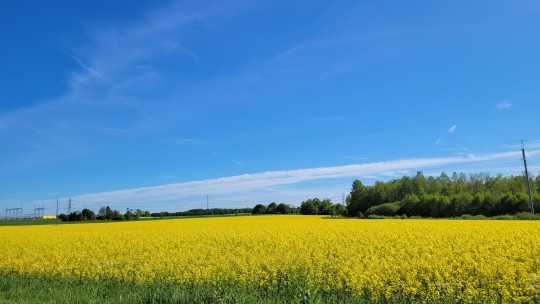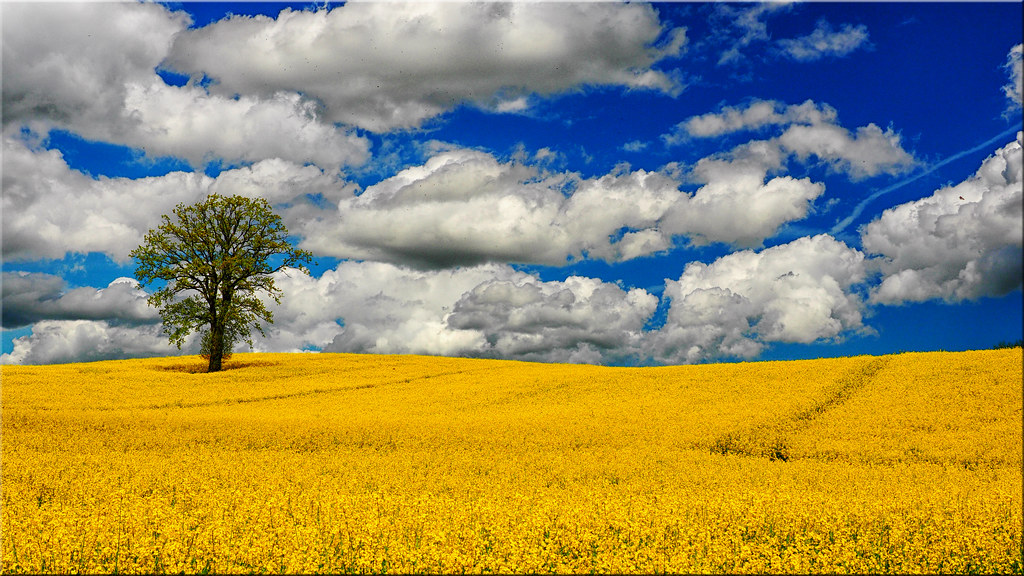#brassica napus
Photo
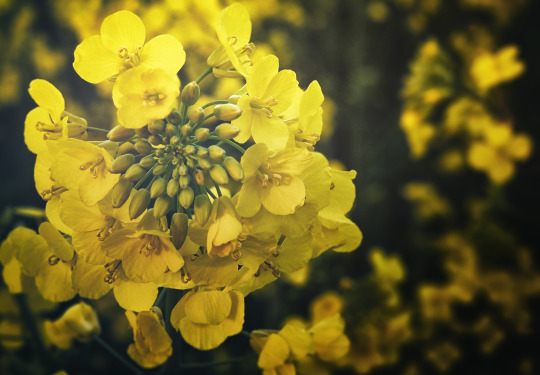
Brassica Napus
April ~ 2023
146 notes
·
View notes
Photo

Rapeseed Field
#photographers on tumblr#nature#landscape#spring#yellow#flowers#trees#rapeseed#flores#primavera#amarillo#brassica#brassica napus#fields#ruhrgebiet#germany#original photographers#original photography
327 notes
·
View notes
Photo

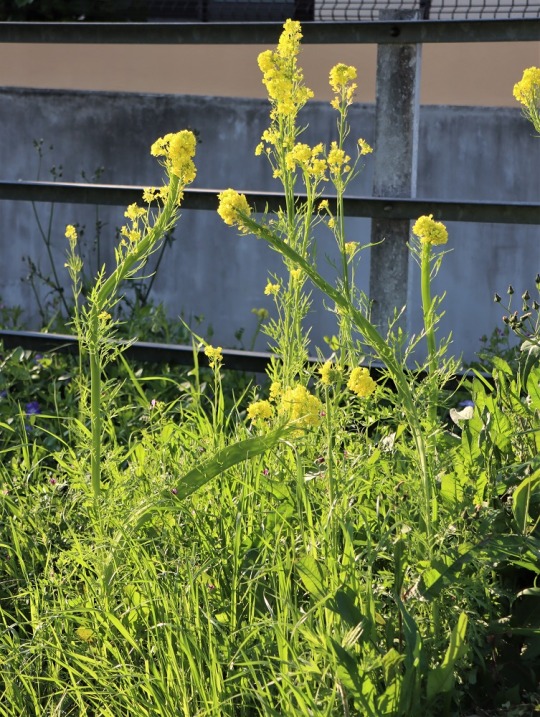
帯化した菜の花。ここでは2021年にも帯化していた(4月9日)
#fasciation#staśmienie#fascjacja#nanohana#rapeseed#brassica napus#Kapusta rzepak#flowers#kwiaty#japan
1 note
·
View note
Video
Rapeseed blossom in Holstein by Ostseetroll
Via Flickr:
Rapsblüte in Holstein
#geo:lat=54.18561940#geo:lon=10.62298680#geotagged#DEU#Deutschland#Malente#Schleswig-Holstein#Sielbeck#Raps#Baum#Frühling#Spring#Tree#Brassica napus#Rapeseed#Olympus#E-M5 MarkII
0 notes
Video
n53_w1150 by Biodiversity Heritage Library
Via Flickr:
The instructive picture book, or, Lessons from the vegetable world Edinburgh :Edmonston & Douglas, 87 Princes Street,1858. biodiversitylibrary.org/page/59644140
#Fruit#Juvenile literature#Pictorial works#Plants#Vegetables#Lloyd Library and Museum#bhl:page=59644140#dc:identifier=https://biodiversitylibrary.org/page/59644140#taxonomy:common=Rape#taxonomy:common=Ryegrass#taxonomy:common=Red-beet#taxonomy:binomial=Brassica napus#taxonomy:binomial=Lolium perenne#taxonomy:binomial=Beta cicla#flickr#ryegrass#beet#red beet#red-beet#beets#rapeseed#brassica napus#oilseed#oilseed rape#lolium perenne#Perennial ryegrass#english ryegrass#winter ryegrass#ray grass#beta cicla
0 notes
Text

‘nother plant Pokémon drawing. This time Brassius and the Brassica napus, the oilseed plant (I think it’s called like that? I also think it’s called rapseed or something like this? Idk, English isn’t my first language and I don’t want to google).
#artists on tumblr#anime#original work#illustration#copicciao#copicdrawing#traditional art#pokemon#pokemon sv#pokemon scarvio#pokemon scarlet and violet#pokemon scarlet violet#pokemon brassius#pokemon fanart#pokemon fandom
24 notes
·
View notes
Text

西洋油菜[Seiyōaburana]
Brassica napus
西洋[Seiyō] : the West
油菜[Aburana] : Brassica rapa
The genus Brassica flowers are collectively referred to as 菜の花[Na no hana] or 菜花[Nabana], and its edible leaves are called 菜っ葉[Nappa]. 油[Abura] means oil, 菜 means rape or greens, 花 means flower and 葉[ha] means leaf.
This one and Aburana(var. oleifera) are extremely similar and difficult to identify. This one was something that had been feralized and seemed to be slightly different from Aburana in a nearby field, so I assumed this one to be Seiyōaburana. This was because the leaves of that Aburana were more tender and wrinkled, and they are close to the characteristics that it has.
いちめんのなのはな[Ichimen no na no hana], the rape blossoms blooming all over the field, are one of the most popular springtime traditions. Now, there is a poem by Yamamura Bochō in the following linked page. All written in hiragana.
https://www.aozora.gr.jp/cards/000136/files/52348_42039.html (ja)
https://en.wikipedia.org/wiki/Bochō_Yamamura
18 notes
·
View notes
Text
Indigenous knowledge and food sovereignty on the prairies. Native plants and history of farming in the the northern Great Plains. Maskēko-sākahikanihk (Muskeg Lake Cree Nation), Wipazoka Wakpa Oyate (Sioux Valley Dakota Nation), and Piikani First Nation recent approaches to sustainable food production. Bison grazing and grassland health on Piikani land.
---
Indigenous peoples had lived and farmed the area centuries before European contact. [...]
Melissa Arcand is a soil scientist and associate professor at the University of Saskatchewan, and she grew up on a modern grain farm at Maskēko-sākahikanihk, or Muskeg Lake Cree Nation, north of Saskatoon. [...] Saskatchewan has more farmland than any other Canadian province. [...]
The yard is full of trees, including poplars, spruce and Manitoba maples — the fast-growing hardy species that form a protective wind-break around farm yards across the Prairies. Patricia shows me her vast garden on the south side of the yard. She has corn, squash, sunflowers, carrots, peas, flowers and shrubs of haskap and saskatoon berries. [...]
First Nation grain farmers are rare everywhere. In most cases, farmable land on the dozens of First Nation reserves across the plains of Manitoba, Saskatchewan and Alberta is rented out to non-Indigenous farmers who live nearby. That came up as a concern during a forum Arcand organized on Indigenous farming in Saskatchewan in 2018. In forum discussions, attendees resolved to take greater control over farming activities on their lands. [...]
---
Eugene Ross has a slow, soothing voice. [...] Ross is an Elder at Wipazoka Wakpa Oyate, literally “Saskatoon river people”, the Dakota name for Sioux Valley Dakota Nation. It lies at the forks of the Assiniboine and Oak Rivers, 50 kilometres west of Brandon, Manitoba [...].
Entering the plains from the rugged forest landscape of the Canadian Shield feels like dropping through a hatch in the back of a wardrobe. They are completely different worlds. West of the uber-flat Red River Valley, just beyond the town of Austin, the landscape begins to undulate, like a sloppily made bed. From there, the Prairies fold and flatten, roll and settle, in all directions, seemingly forever. Canada has 154 million acres of farmland, according to Statistics Canada’s 2021 census, and 126 million of those are in the Prairie provinces of Saskatchewan, Alberta and Manitoba. [...]
“Our Tylenol back in the day,” he says, pointing to Seneca root. From a ceiling hook, Ross takes down a string of white tubers, each about the size of a big toe: wild turnips. [...]
Production of another oilseed relative, Brassica napus, now the most common species on the Prairies, began in the 1940s. [...] In 1978, this improved crop got a new name: canola. Western Canadian farmers now grow canola on more than 20 million acres [...]. Canola is a cool-season crop that thrives in Western Canadian growing conditions. Ross knows a long list of native plants traditionally used for food and medicine that also thrive in the region. While highly unlikely that any will become the next canola, they could underpin a more diverse farming future. [...]
---
You can see Piikani First Nation from the cliff’s edge at Head-Smashed-In Buffalo Jump in southern Alberta. [...] Today that great green sea, whipped by winds from a cascade of buffalo ghosts and bisected by the Old Man River, is Piikani territory. Noreen Plain Eagle is the land manager for Piikani First Nation and its 106,000 acres. [...]
Food sovereignty is a priority. Piikani’s reliance on outside food became acutely clear in the early days of the Covid-19 pandemic when food companies, overwhelmed by supply chain issues, could not deliver their usual supply. Piikani nearly ran out of fresh food. It was a call to action for Plain Eagle. “We don’t want to be at the mercy of someone else to provide food to our community,” she says. “We want food sovereignty.” [...]
The next phase is to build a greenhouse at the school to produce a wider variety of vegetables. “We will use it as a hands-on teaching tool for students,” Plain Eagle says. “Terminology will be in the Blackfoot language.” [...] Plain Eagle also has plans to grow corn and potatoes for the community, and to think more strategically about the nation’s small bison herd. “Bison have always been part of our history,” she says, “and we’re learning how they can contribute to our grassland health.” Grasslands need a keystone grazer, like bison or cattle, to keep the grass in check and maintain grassland biodiversity. [...]
---
Text by: Jay Whetter. “The true history of farming on the Prairies.” The Narwhal. 8 October 2022. [Bolded emphasis and italicized first paragraph added by me.]
220 notes
·
View notes
Text
Karelian Words - Root vegetables
Juurekset, paissikkahat - root vegetables, plants of which roots are eaten
Akančiiloi - Marsh woundworth (Stachys palustris)
Batat, batakka - Sweet potato (Ipomoea batatas)
Čibanbutki, kožlanbutki - Ground elder (Aegopodium podagraria)
Dorogaohtoi, takkisheinä - Burdock (Arctium tomentosum, A. lappa and A. nemorosum)
Ičenbutki, butkiheinä - Wild angelica (Angelica sylvestris)
Imeläjuurikoi, s'okla - Sugar beet (Beta vulgaris altissima)
Jogihyyhky, kondienhyyhky - Wild celery (Angelica archangelica)
Juuripetruška - Parsley root (Petroselinum crispum tuberosum)
Juuriselderi - Celery root (Apium graveolens rapaceum)
Kagrajuurikoi - Common salsify (Tragopogon porrifolius)
Kal'uha, koalikka, lanttu - Rutabaga, swede (Brassica napus rapifera)
Kartohka, potakka - Potato (Solanum tuberosum)
Keldajuurikoi, morkohka - Carrot (Daucus carrota sativus)
Moabul'u, moabul'pukka - Jerusalem artichoke (Helianthus tuberosus)
Mustajuurikoi - Black salsify (Scorzonera hispanica)
Nagris, ńakoi, repa - White turnip (Brassica rapa rapa)
Osmankeäbä - Broadleaf cattail (Typha latifolia)
Perččujuurikoi, hren'a - Horseradish (Armoracia rustiana)
Redissu - Radish (Raphanus sativus sativus)
Ruskeijuurikoi, sv'okla - Beetroot (Beta vulgaris vulgaris conditiva)
Rötky - Black radish (Raphanus sativus niger)
Valgeijuurikoi - Daikon (Raphanus raphanistrum sativus)
Voikukka - Dandelion (Taraxacum)
Ämmänbutki, pasternakka - Parsnip (Pastinaca sativa)
#karjal#karjalan kieli#карельский язык#karelian#karjala#karelia#karelian language#kariela#каре́льский язы́к
16 notes
·
View notes
Photo



25 June 2022 - South Downs
Common poppy (Papaver rhoeas) blooming beneath the rape (Brassica napus)
#original photography blog#nature#common poppy#south downs#england#wanderlust#summer#fields#canon 6d mark ii
22 notes
·
View notes
Text
there’s a dirt patch close to my flat,it’s quite shaded and matted with branches,, I think people dump their yard waste there sometimes. Always a lot of mystery junk too. Sometimes I can get food from garbage left there.
I’ve been Observing her since I’ve spotted goldcrests (Regulus regulus) and heard eu. collared dove (Streptopelia decaocto) (which aren’t the most common dove around here, which are wood pigeons by far) in these dirt plant margin.


I noticed this yesterday… Somehow rapeseed (Brassica napus napus) managed to get in the dirt patch!! I suppose it adds up since it’s a big oil growing region. this little guy must’ve travelled a while. maybe from one of the aforementioned birds.
I love this new friend :]
2 notes
·
View notes
Photo


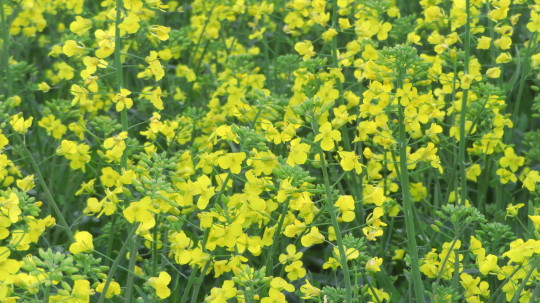

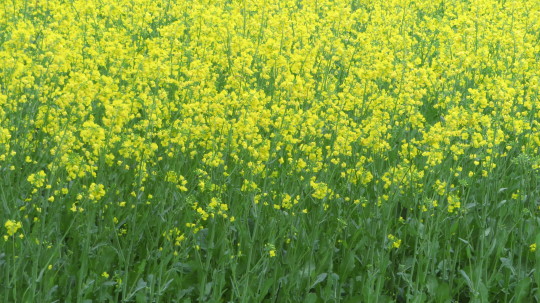

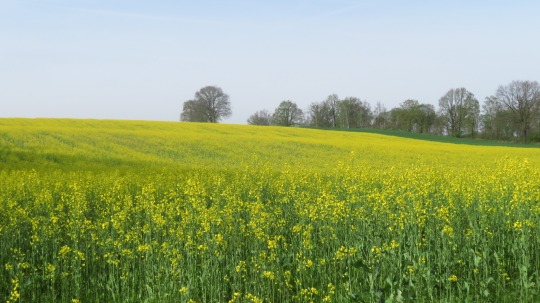
Raps | Rapeseed
Brassica napus
4 notes
·
View notes
Photo

Amazingly Healthy KALE Mix Seeds , Organic, Heirloom, Open Pollinated Non-Gmo B25 Kale is a member of the brassica family and a cold-tolerant, easy-to-grow, highly nutritious green. Kale may be the hardiest of the cabbage kin. It excels in cold weather, tasting best after frost has kissed the tender, succulent, superfood leaves. This mix is the rare, flavorful kale variety you will want to grow in your garden. Convert your garden to an epic garden. You can even use these hardy green veggies as ornamental flowers and still benefit from their green leaves all spring, summer and autumn long till December actually. Able to withstand frost and cold climates, kale often symbolizes the coming winter season. Is there any dish that can't use a flavor and nutrient boost from kale? This blend of amazing healthy kale mix provides a variety of colors, textures, sizes, and flavors. Harvest baby greens in just 25 days and allow some plants to grow to maturity. This frost-hardy crop is a rock star in the garden even as other vegetables are winding down. Count 25 Botanical Name: Brassica oleracea and B. napus Days to Maturity: 25–55 days Days to Germination: 3-10 Seeding Depth: 1/2" Plant Spacing: 12-18" Row Spacing: 24" Plant height: 12-18" Growth Habit: Leafy upright Soil Preference: Nitrogen-rich, loamy, well-drained Temperature Preference: 45-70 °F Light Preference: Full sun - partial shade Pests and Diseases: No serious diseases but monitor regularly for aphids, cabbage worms, flea beetles, and thrips. Hardiness: Biennial grown as an annual, kale is very cold hardy, and may overwinter in milder climates. Plant Dimensions: If left to grow to maturity, the varieties in this mix will get up to 4' tall, but for baby greens should be picked at 2"–4". In the spring, sow seeds 8-10 weeks before the last frost. For fall harvest, sow seeds directly from July-September for a late fall crop that will taste super sweet after a bit of frost exposure. Kale requires good moisture and full sun. Set plants out or thin to 12- 18 inches apart. Plant seeds ¼ deep. Ideal germination temperature is 45-85 F. Germinates in 6-9 days. Heirloom NON-GMO, Perennial, Easy to Grow, Rich Flavor Attracts Pollinators Attracts bees and butterflies Repels pests Aromatic Kale is believed to be more similar to the original wild cabbage ancestor than more refined brassicas like cauliflower and Brussels sprouts. It hails from the eastern Mediterranean, as well as Asia Minor. The ancient Romans were responsible for dispersing kale and collards to Europe where they were quickly embraced as a cold-loving crop perfectly suited to the Northern European climate. Most people would choose something sweet over something green any day of the week. But if you’re looking to improve your diet or perhaps drop a few pounds, the more cruciferous vegetables you eat, the better. And if you’ve yet to discover kale, it’s time to give this green, leafy superfood a try — not only because of its low calories but also because of the health benefits you’ll receive. USES: Many culinary uses Kale is a perfect beginner gardener’s crop, and it requires very little care to thrive. Kale can tolerate an impressive amount of cool weather. In mild climates, it can be grown year-round, perhaps with a lull in the punishing heat of summer. In cooler climates, kale is considered one of the best crops for season extension. With a bit of protection, it can be grown late into the fall. PESTS/SPECIAL CONSIDERATIONS In some areas, cabbage worms will wreak havoc on all cabbage relatives. Try a clove of homemade garlic and hot pepper spray to discourage these pests from munching your plants. Seeds are not individually packaged according to variety but are packaged in one envelope for this listing, please see other listings for individual varieties. We do NOT make any claims that you will receive all seed varieties since we have no way of knowing which are which. We do not guarantee that you will get all varieties since we have mixed them all and packed them randomly. Varieties based on their seasonal availability may change. Species may also be included in the mix (Pre-Mixed and randomly packaged): A Blend of BLUE CURLED SCOTCH KALE, CASPER KALE, DAZZLING BLUE KALE, DWARF SIBERIAN KALE, JAPANESE FLOWERING KALE, DWARF BLUE CURLED, DWARF SIBERIAN IMPROVED', NERO DI TOSCANA, NERO TOSCANA' LACINATO, RED URSA KALE, RUSSIAN RED OR RAGGED JACK KALE, SCARLET KALE, THOUSANDHEAD KALE, TRONCHUDA KALE, Scarlett Kale, Tronchuda Kale, Abundance Kale, Lacinato (Dinosaur) Kale, Red Russian Kale, Siberian Kale, Gai Lan, Walking Stick Kale, Curly Kale, Chinese Kale / Gai Lan, Redbor Kale / Purple Kale, Red Russian, Scotch Kale, Salad Savoy, Portuguese Kale, Ornamental Kale, Abundance Kale, Hoj Amager Grunkohl (DK), Madeley (UK), Westphalian (UK), Westland Winter (UK), Westländer Winter (DE), Asparagus Kale (IR, UK), 1,000 Headed kale (DE), Roter Krauskohl (DE), Altmarker Braun (DE), Baltic Red (SE), Blonde Butter of Jalhay (BE), Butterkohl (DE), Nicki’s Cut’N’Come Again (IE), Shetland (UK), Hellerbutter Kohl (CH), Cavolo Nero di Toscana (IT), and Ostfriesische Palm (CH) and much more... FREE GIFT when you order 5 items or more. Free gift is full of surprise seeds which may include single or mixed varieties. Note: For Free shipping orders, no tracking # will be provided to make the shipping cost-effective for us and free for you. Returns & exchanges are not accepted. But please contact me if you have problems with your order Our seeds are guaranteed to germinate. Once the seeds have sprouted, please understand that we cannot be held responsible for the many uncontrollable growing and climatic conditions that must be met to ensure the success of your crop(s). I try my best to make my buyers happy and would appreciate it if you'd contact me first if you have any questions or problems with your order. If you open a case before contacting me first, I will automatically block you from future purchases. Thank you for your understanding. SOWING INFO When to Sow Outside: 1 to 2 weeks before your average last frost date, when soil temperature is above 45°F for spring/summer crop; 10 to 12 weeks before your average first fall frost date for fall crop; and in mild climates, fall for very early spring crop. When to Start Inside: RECOMMENDED: 4 to 6 weeks before your average last frost date. For a fall crop, start 12 to 14 weeks before your average first fall frost date, transplanting after 4 to 6 weeks. Ideal soil temperature for germination is 65°–85°F. Days to Emerge: 5–10 days Seed Depth: ¼" Seed Spacing: A group of 3 seeds every 18" Row Spacing: 24" Thinning: When 1" tall, thin to 1 every 18" HARVESTING Harvesting: Outer leaves can be harvested as baby greens when 2"–3" tall, any time when full-sized beginning with the lowest, or the whole plant can be cut off at ground level at maturity. For fast regrowth, harvest up to only ⅓ of the plant at a time. The Health Benefits of Kale -------------------------------------- Lowers the Risk of Heart Disease - The potassium in kale may help promote heart health by reducing your risk of heart disease and stroke Helps Prevent Cancer - contains potential cancer-fighting properties Aids in Protecting Eyesight - contains the vitamins lutein and zeaxanthin, which contribute to healthy eye cells and help lower the risk of age-related macular degeneration. Promotes Healthy Blood Clotting - Vitamin K plays a role in healthy blood clotting, and people with a deficiency may experience slow clotting time. Helps With Weight Loss - Because kale is low in calories and high in water, it’s an excellent food for weight loss. Improves Skin Health and Appearance - This vegetable doesn’t only improve your waistline and help reduce the risk of certain illnesses, it can also improve your skin. Contributes to Healthy Blood Sugar Levels - Manganese is a trace mineral in kale that may decrease insulin resistance, the hallmark of type 2 diabetes, and help people with type 2 diabetes maintain healthy blood sugar levels http://springsofeden.myshopify.com/products/amazingly-healthy-kale-mix-seeds-organic-heirloom-open-pollinated-non-gmo-b25
#Organic#Heirloom#Non-GMo#kale seeds#Lacinato Kale#Tronchuda Kale#Red Russian Kale#Siberian Kale#Gai Lan#Walking Stick Kale#Portuguese Kale#Ornamental Kale#Redbor Kale
2 notes
·
View notes
Note
🌻
i'm handing in notice later today because my job makes me miserable
apples and roses are in the same family (rosaceae)
brassica mostly contains cabbages and mustards, including bok choy (brassica rapa chinensis) and canola (rapeseed, brassica napus napus)
2 notes
·
View notes
Text
#1832 - Brassica napus subsp. napus - Canola


More weeds growing at Lake Richmond. They were clearly a cruciferous vegetable, and the AgDept confirmed that they’re one of the biggest crops in the world.
The word Canola was originally a Canadian trademark - "Can" from Canada and "OLA " meaning "Oil, low acid" - because the actual name of the plant - rape, Rapeseed, or Oilseed Rape - was more than slightly problematic. Canola is a cultivar grown in gigantic quantities for the oil content of the seeds and reduced levels of erucic acid therein. Another subspecies, Brassica napus subsp. rapifera is grown for the roots, and is known as the rutabaga, or swede. Siberian kale (B. napus var. pabularia) used to be common as a winter-annual vegetable.
But then Brassica is a ludicrously versatile genus, with various species, subspecies, hybrids and cultivars grown for their leaves, buds, florets, roots, stems, seeds, or even for ornamental purposes or walking sticks. At least six of the current species are the result of chromosome combinations from three earlier species - B. napus is a hybrid of Brassica oleracea (cabbage, broccoli, cauliflower, kale, Brussels sprouts, collard greens, Savoy cabbage, kohlrabi, and gai lan etc.) and Brassica rapa (a whole different set of vegetables including turnips, napa cabbage, bomdong, bok choy, and rapini).
3 notes
·
View notes
